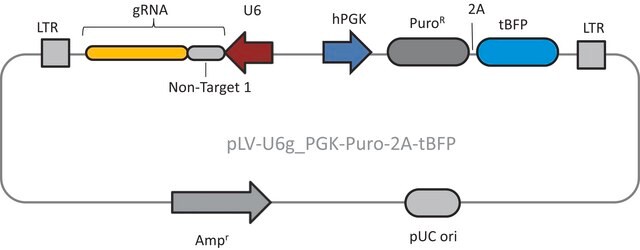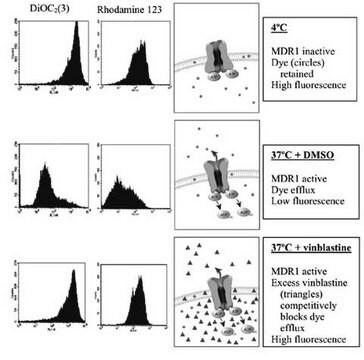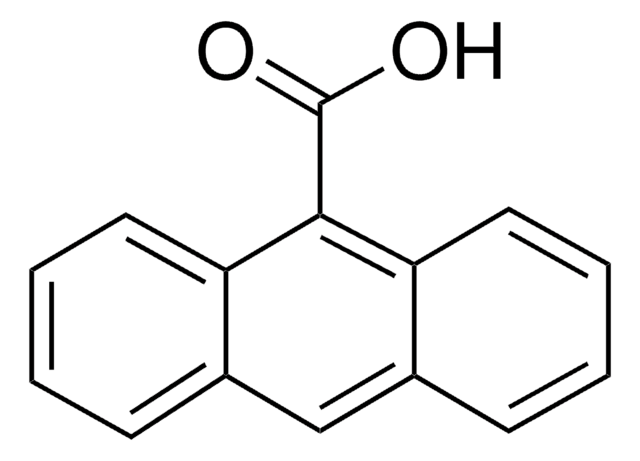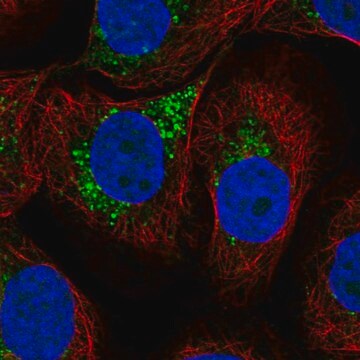NCSTUD001
MISSION® Synthetic microRNA Inhibitor
ath-miR416, Negative Control 1, Sequence from Arabidopsis thaliana with no homology to human and mouse gene sequences
Sinonimo/i:
Synthetic Tough Decoy, sTuD
Autenticatiper visualizzare i prezzi riservati alla tua organizzazione & contrattuali
About This Item
Codice UNSPSC:
12352200
NACRES:
NA.51
Prodotti consigliati
Nome Commerciale
MISSION®
Forma fisica
solid
Sequenza matura
GGUUCGUACGUACACUGUUCA
N° accesso Sanger maturo/minor
N° accesso Sanger microRNA
Temperatura di conservazione
−20°C
Cerchi prodotti simili? Visita Guida al confronto tra prodotti
Descrizione generale
Individual synthetic microRNA inhibitors were designed using a proprietary algorithm, which is based on the work of Haraguchi, T, et al. and in collaboration with Dr. Hideo Iba, University of Tokyo.† This algorithm utilizes the tough decoy (TuD) design. miRNA are known to regulate gene expression in a variety of manners, including translational repression, mRNA cleavage and deadenylation.
The MISSION synthetic miRNA Inhibitors are small, double-stranded RNA molecules designed to inhibit a specific mature miRNA. The miRNA inhibitors were designed using the mature miRNA sequence information from miRBase and are 2′-O-methylated RNA duplexes with a miRNA binding site on each strand. Optimal miRNA inhibition is provided after transfection due to the robust secondary structure of the inhibitor.
The MISSION synthetic miRNA Inhibitors are small, double-stranded RNA molecules designed to inhibit a specific mature miRNA. The miRNA inhibitors were designed using the mature miRNA sequence information from miRBase and are 2′-O-methylated RNA duplexes with a miRNA binding site on each strand. Optimal miRNA inhibition is provided after transfection due to the robust secondary structure of the inhibitor.
- Long lasting inhibition at very low dosage
- Excellent resistance to cellular nucleases
- Custom synthesis available for a variety of species
Altre note
Based on miRBase V19
Note legali
MISSION is a registered trademark of Merck KGaA, Darmstadt, Germany
Avvertenze
Warning
Indicazioni di pericolo
Consigli di prudenza
Classi di pericolo
STOT RE 2 Inhalation
Organi bersaglio
Respiratory Tract
Codice della classe di stoccaggio
11 - Combustible Solids
Classe di pericolosità dell'acqua (WGK)
WGK 3
Punto d’infiammabilità (°F)
Not applicable
Punto d’infiammabilità (°C)
Not applicable
Certificati d'analisi (COA)
Cerca il Certificati d'analisi (COA) digitando il numero di lotto/batch corrispondente. I numeri di lotto o di batch sono stampati sull'etichetta dei prodotti dopo la parola ‘Lotto’ o ‘Batch’.
Possiedi già questo prodotto?
I documenti relativi ai prodotti acquistati recentemente sono disponibili nell’Archivio dei documenti.
Ilker Tinay et al.
The Prostate, 78(12), 927-937 (2018-05-12)
MicroRNAs (miRNAs) are small non-coding RNAs, which negatively regulate gene expression and impact prostate cancer (PCa) growth and progression. Circulating miRNAs are stable and detectable in cell-free body fluids, such as serum. Investigation of circulating miRNAs presents great potential in
Qing-Yan Lin et al.
Biotechnology letters, 42(1), 35-44 (2019-11-25)
The study is to research how miR-34-SIRT1 is regulated during hypoxia in lung cancer cells. Analysis of publicly available datasets from patients with NSCLC did not reveal significant genomic alterations in RBM38, SIRT1, HIF1A, MIR34A, MIR34B, and MIR34C, but expectedly
Yao Dai et al.
Redox biology, 16, 255-262 (2018-03-20)
Several miR/s that regulate gene/s relevant in atherogenesis are being described. We identified a miR (miR-98) that targets LOX-1, a receptor for ox-LDL, and speculated that it might be relevant in atherogenesis. MicroRNA-98 was predicted by bioinformatics tools. The effects
Let-7a-regulated translational readthrough of mammalian AGO1 generates a microRNA pathway inhibitor.
Anumeha Singh et al.
The EMBO journal, 38(16), e100727-e100727 (2019-07-23)
Translational readthrough generates proteins with extended C-termini, which often possess distinct properties. Here, we have used various reporter assays to demonstrate translational readthrough of AGO1 mRNA. Analysis of ribosome profiling data and mass spectrometry data provided additional evidence for translational
Il team dei nostri ricercatori vanta grande esperienza in tutte le aree della ricerca quali Life Science, scienza dei materiali, sintesi chimica, cromatografia, discipline analitiche, ecc..
Contatta l'Assistenza Tecnica.







